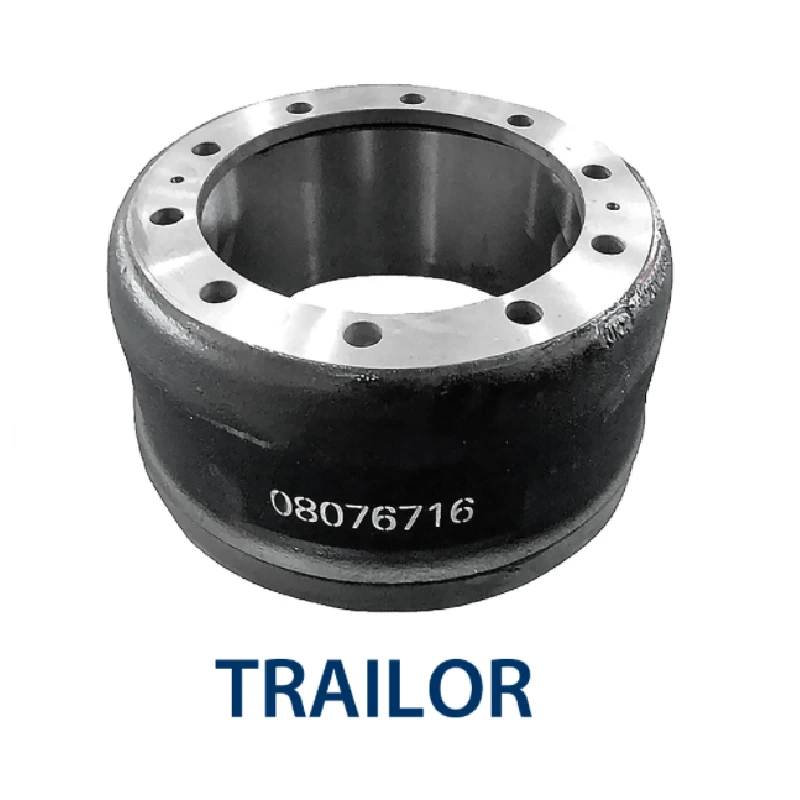Dec . 09, 2024 21:34 Back to list
Understanding the Differences Between Brake Drums and Brake Rotors in Vehicles
Are Brake Drums and Rotors the Same Thing?
When it comes to automotive braking systems, the terminology can be quite confusing for many drivers. One of the most common points of confusion lies between brake drums and brake rotors. Are they the same thing? The simple answer is no; while they serve a similar function, they are distinct components with different designs, mechanisms, and applications.
Brake Drums Explained
Brake drums are a key component of a drum brake system, commonly found in older cars and some light trucks and motorcycles. The design of brake drums is cylindrical, with a hollowed-out shape that rotates with the wheel. Inside the drum are brake shoes, which are equipped with friction material.
When the driver presses the brake pedal, hydraulic fluid moves from the master cylinder to the wheel cylinder located inside the drum. This causes the brake shoes to expand outward against the inner surface of the drum, creating friction. The friction slows down the rotation of the wheel, effectively bringing the vehicle to a stop. The simplicity of this system makes it reliable and cost-effective, especially for rear brakes.
Brake Rotors Explained
On the other hand, brake rotors are part of a disc brake system, which is more commonly found on modern vehicles, especially in the front braking systems. Brake rotors are flat, disc-shaped components that are attached to the wheel. When the brake pedal is pressed, brake calipers squeeze brake pads against the rotors, thereby applying friction to slow the vehicle down.
The disc brake design offers several advantages over drum brakes, including better heat dissipation and more consistent stopping power. Since the rotors are exposed to airflow, they can cool down more effectively than brake drums, which can lead to reduced brake fade during heavy use. Disc brakes also tend to offer improved response times and performance in adverse weather conditions.
are brake drums and rotors the same thing

Key Differences Between Brake Drums and Rotors
1. Design and Construction The most obvious difference lies in their shapes. Brake drums are cylindrical, while rotors are disc-shaped. This difference in design results in variations in how these components dissipate heat and respond to braking force.
2. Mechanism In drum brakes, the brake shoes are pushed outward against the inner surface of the drum. In contrast, disc brakes employ pads that slide against the outer surface of the rotor. This fundamental difference leads to variations in braking performance and wear patterns.
3. Performance Disc brakes generally provide better performance in terms of stopping power and heat management, making them more effective for high-performance vehicles. Drum brakes, while effective, may experience issues with heat buildup, which can reduce their effectiveness over time.
4. Maintenance and Lifespan Brake drum systems often require more frequent adjustments and maintenance to ensure proper alignment and function of the brake shoes. Disc brakes usually require less maintenance; however, the pads and rotors do eventually wear out and need to be replaced.
5. Application While drum brakes are still used in some applications, especially for rear wheels on economy vehicles, most modern vehicles are equipped with disc brakes for improved safety and performance. In many cases, a combination of both systems is employed, with disc brakes in the front and drum brakes in the rear.
Conclusion
In summary, while brake drums and brake rotors are both crucial components of a vehicle's braking system, they are not the same thing. Each has its own unique design and function, which affects performance, maintenance, and application. For drivers, understanding these differences can help in making informed decisions regarding vehicle maintenance and upgrades. Whether your vehicle is equipped with drum brakes, disc brakes, or a combination of both, keeping these systems in good working order is essential for safe driving.
-
Volvo Brake Drum: OEM Quality, Optimal Safety
NewsAug.27,2025
-
Durable Brake Drum MAZ for Heavy Duty Trucks | High Performance
NewsAug.26,2025
-
FUWA: Premium Quality, Reliable Performance & Innovative Solutions
NewsAug.25,2025
-
Liza Brake Drum: Superior Quality & Performance for Safe Driving
NewsAug.24,2025
-
Iveco Brake Drum | Premium OE Quality for Daily & Eurocargo
NewsAug.22,2025
-
Your Brake Drum Man: Quality & Performance Parts
NewsAug.21,2025
